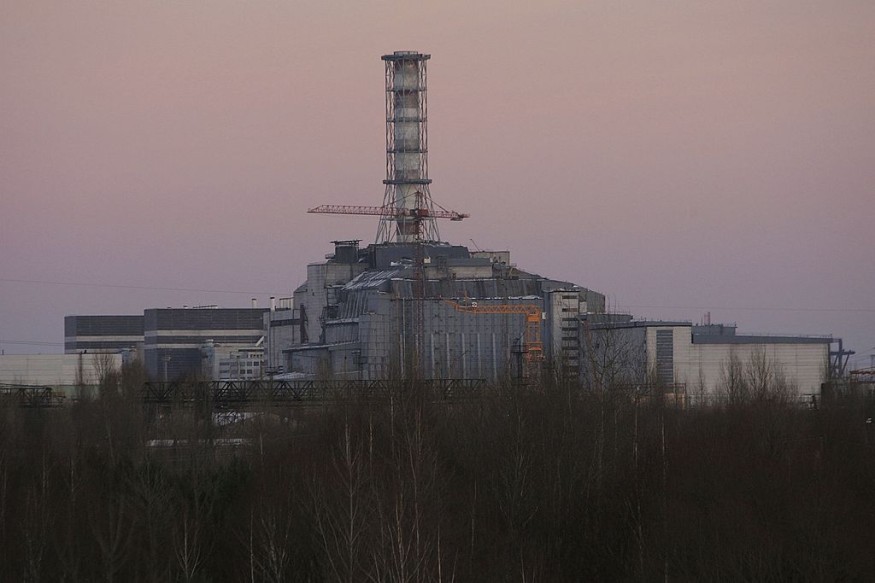After remote systems went dark, the international nuclear watchdog says it can no longer monitor what is happening at Chernobyl.
The scenario inside the wrecked plant, where 210 scientists were allegedly hostaged, has experts from the International Atomic Energy Agency (IAEA) increasingly concerned.
After remote systems went dark, the international nuclear watchdog says it can no longer monitor what is happening at Chernobyl.
The scenario inside the wrecked plant, where 210 scientists were allegedly hostaged, had experts from the International Atomic Energy Agency (IAEA) increasingly concerned.
It has been under Russian control for several days, and staff has been confined to operate essential safety measures.
The IAEA has now confirmed through Metro that remote data transmission from Chernobyl NPP safeguards monitoring systems appears to have been lost.
After being denied access for over a month, Ukraine's official regulator claimed it could only contact the facility via email.
WIONews said the IAEA uses the term "safeguards" to describe the technological techniques it employs to manage nuclear material and activities to prevent the spread of nuclear weapons by detecting their abuse early.

CHERNOBYL - JANUARY 24: The Sarcophagus of the Chernobyl Nuclear Reactor number 4 is seen on January 24, 2006 in Chernobyl, Ukraine. Within seven months the number 4 reactor building and its molten core was enclosed within a reinforced concrete casing. This shelter, or sarcophagus, was supposed to absorb the radiation and contain the remaining fuel. The sarcophagus was considered to be an interim measure. It was designed with a lifetime of only 20 to 30 years in mind. The greatest problem is a lack of stability as it was hastily constructed. A new structure designed to enclose the damaged reactor is due to be completed by 2008.
Radiation Readings Remain Normal
Ukraine's atomic authority stated that eight of the country's 15 nuclear reactors are operating normally.
Two of them work at the Zaporizhzhya nuclear power facility, Europe's largest, which has been encircled by the Russian military since last week.
According to the International Atomic Energy Agency (IAEA), radiation readings at the locations were normal.
State Nuclear Regulatory Inspectorate of Ukraine (SNRIU) underscored per iNews that any psychological pressure or interference with NPP personnel's job has a detrimental influence on nuclear and radiation safety.
ALSO READ : Chernobyl Vs. Zaporizhzhia Nuclear Plants: Why the Latter is Safer and Doesn't Spread Too Much Radiation?
The meltdown at the Chernobyl nuclear power facility in April 1986 is still regarded as the greatest industrial disaster in history.
Because radiation levels are still extremely high, an exclusion zone has been established around the destroyed core.
Chernobyl's Nuclear Data Communication in Jeopardy
Officials claim the Chernobyl safety system in Ukraine is in jeopardy after nuclear data communication was disrupted when Russians gained control of the plant.
"The Director-General indicated that remote data transmission from safeguards monitoring systems installed at the Chornobyl NPP had been lost," IAEA said in a statement obtained by The US Sun.
The IAEA's work on safeguard systems focuses on maintaining track of nuclear material.
Since Russian soldiers gained possession of the facility over two weeks ago, Ukrainian officials have warned that technical staff and guards have been working there.
Ukrainian officials warned the IAEA that rotating 210 technical workers and guards is "getting increasingly important."
Since the day before the Russian military entered the site 13 days ago, the same shift has apparently been on duty at the Chornobyl NPP.
Officials maintain that the workforce at nuclear plants under the Ukrainian administration, on the other hand, has been changing continuously.
According to the State Nuclear Regulatory Inspectorate of Ukraine, the nuclear staff normally operate in rotations, and their inability to leave their stations creates a rising risk to the safe administration of the decommissioned site.
RELATED ARTICLE : Ukraine Reports No Radiation Level Changes at Zaporizhzhia Nuclear Power Plant After Russia Seizes Facility
Check out more news and information on Energy in Science Times.
© 2025 ScienceTimes.com All rights reserved. Do not reproduce without permission. The window to the world of Science Times.












